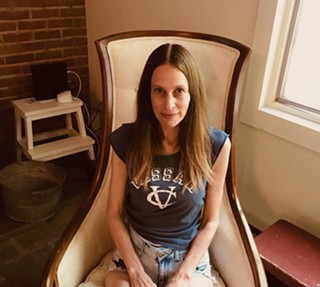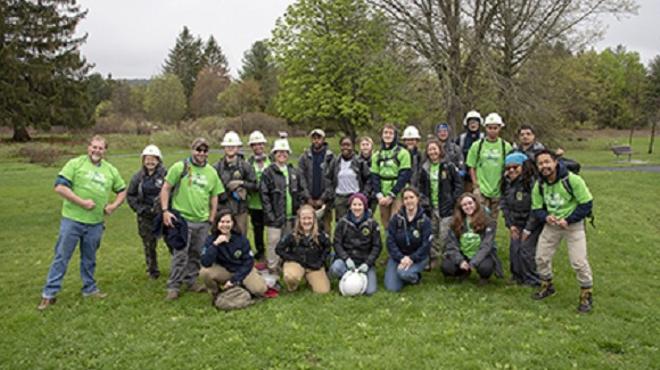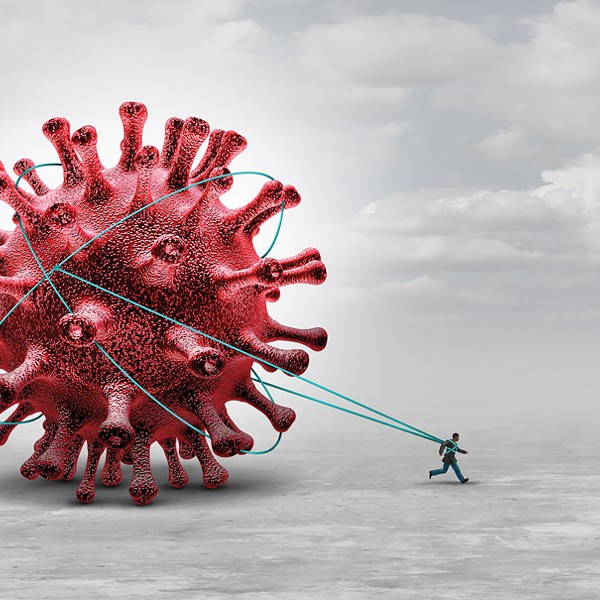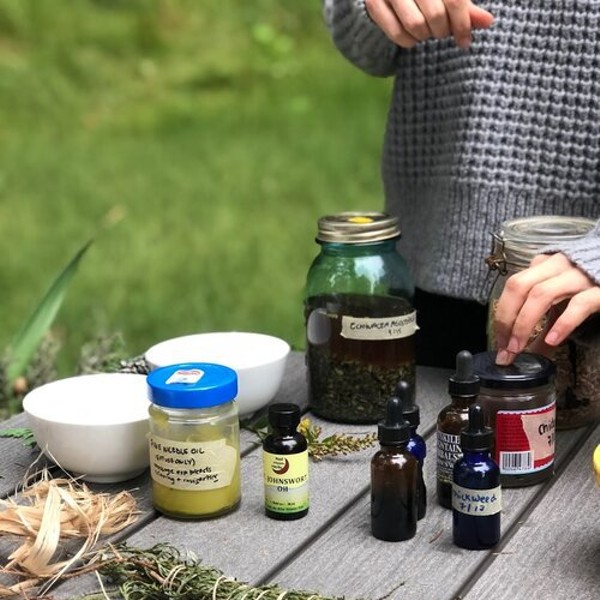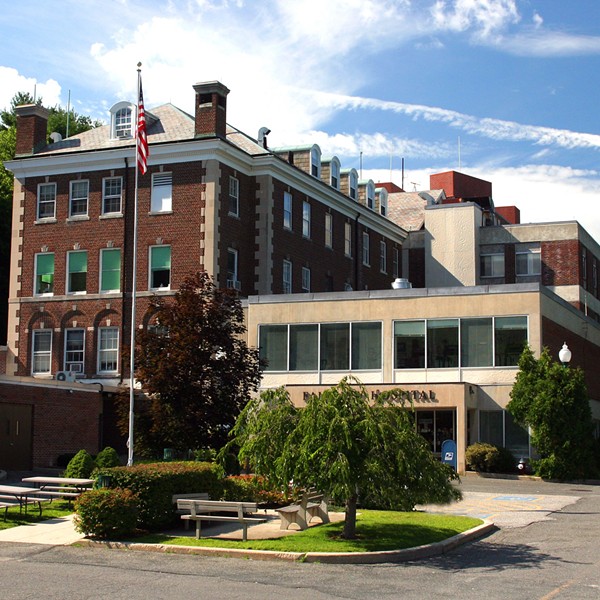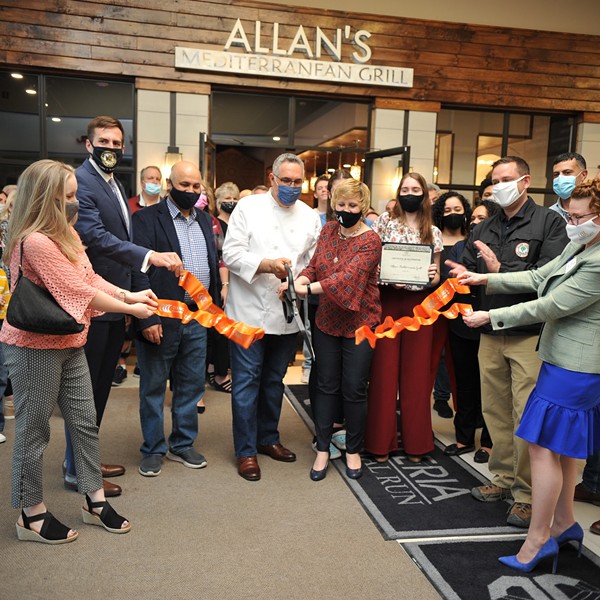When Ashley Pugliese fell ill in February 2020, her husband drove her to two emergency rooms. The first one "looked like a warzone, with people lying on the floor coughing," says Pugliese, an employee assistance professional and mother of two from Fishkill. They fled. The second ER was a bit less crowded, and a TV news channel showed footage of hospitals being built in coronavirus-stricken China. "Do you think that is going to end up here?" she asked her husband. Turns out, the virus had already arrived—and was taking up residence in her own body. At the time, there were no tests in the US for COVID-19, and the ER doctor surmised that she had some sort of stomach bug. Sent home to rest, she was never hospitalized or intubated. But she went on to suffer a different kind of grim fate. She did not get better.
From crushing fatigue and debilitating brain fog, to chronic pain, edema, skin blisters, and wounds that wouldn't heal, a barrage of symptoms plagued her, month after month. "It was like living in a nightmare," says the formerly healthy 42-year-old, who went from doing high-intensity interval training at the gym to not having enough energy to cross a room. "There were days I felt like my feet were broken, I couldn't even stand up," she says. "I would lay and look at the clock, knowing I had to work. So my husband would bring my laptop to the bed." She visited doctor after doctor, feeling dismissed and misunderstood. A rheumatologist said, "Well, your bloodwork is fine, so nothing can be wrong." She had just about given up when she saw a segment on "60 Minutes" about a strange new malady popping up in patients around the world—long COVID syndrome. Pugliese cried. Not only did her illness have a name, but she was not alone. And the medical community was taking notice.
Still, when she heard that Westchester Medical Center Health Network (WMCHealth) had opened a post-COVID-19 Recovery Program at its Valhalla campus, she resisted going at first. But her husband made an appointment anyway. That's when she met Carol Karmen, MD, an internal medicine specialist and a clinical lead of the Post-COVID program. Karmen spent an hour with Pugliese, listening to her story, noting each symptom, and laying out a plan to get her feeling better. "Thank God I went," breathes Pugliese, who says Karmen is like her Wizard of Oz scarecrow, showing her the way to go on the winding road of her recovery.
An Epidemic Inside a Pandemic
A year out from COVID-19's first wave, the world is having a lightbulb moment: Long COVID is real and fast becoming a health crisis of its own. "This is an epidemic inside a pandemic, and it has created a generation of people who are going to be maybe a little slower than they were before," says Pugliese, who started a support group for women called the Covid Connection. For months, people like her have been struggling in silence. Now, many of them are feeling a tentative new sensation: hope.
Meanwhile, physicians like Karmen had an inkling about long COVID right from the starting gate. "[In spring of 2020,] my group took care of about 600 COVID-19 patients," she says. "And we started to notice, almost immediately, that some people were not recovering fully. If you look at the flu, 90 percent of people are back to normal in two weeks, and that's not the case for this virus." Media reports trickled in, beginning with an ailing woman in Oregon who wore a trucker's hat and quipped, "I'm in it for the long haul." The name "COVID long-hauler" stuck. Then came the Facebook groups, filling up with people reaching out for help in the dark. And care centers started opening—the Mount Sinai Hospital Center for Post-COVID Care in Manhattan was first on the scene in May 2020. WMCHealth launched its official program in October but had been treating such patients all along. And Nuvance Health—which includes Northern Dutchess Hospital in Rhinebeck, Putnam Hospital in Carmel, and Vassar Brothers Medical Center in Poughkeepsie—now has a robust multidisciplinary program as well for long COVID survivors.
The syndrome even has a scientific name now: post-acute sequelae of COVID-19, or PASC ("sequelae" are long-term effects of a temporary illness or injury). But that doesn't mean we understand everything about it. Here's what we do know. Cases of long COVID can range from fairly mild, with one or two nagging symptoms, to severe and multi-symptomatic. Many sufferers originally experienced only a mild, cold-like version of COVID-19, and then later, a subset of symptoms developed. It can plague adults of all ages and, like autoimmune disease, it seems to affect more women than men. The jury is still out on long COVID's prevalence, but about 15–30 percent of people with COVID-19 may go on to have lingering symptoms. "There's a whole lot of speculation now on what's causing all this," Karmen says. "Is it an autoimmune thing? Is it an inflammatory response? It could be. Every single day we're finding out something more about this."
Post-viral and bacterial syndromes are not new—chronic Lyme is one. What makes this different is the sheer number of patients struggling all at once. Paul Wright, MD, a neurologist in Poughkeepsie and senior vice president and system chair of the Neurosciences Institute, who has witnessed COVID's devastating effects on many people, explains that the coronavirus's spike proteins can potentially wreak havoc anywhere in the body because they attach to receptors in many different places. "Everyone talks about losing their sense of smell, and that's because we have these receptors in the nasal passages," he says. "We have them in the muscles, the heart, the brain. No matter how you cut it, this is a harsh virus that affects multiple organ structures and groups. Overall, it's going to have lingering effects. It's also going to get better."
Creating a Circle of Care
Hope for long COVID starts with awareness on the part of both patients and caregivers. "Primary care providers are becoming better versed in how to recognize long COVID symptoms, and in seeing it as an actual syndrome," says Sharagim Kemp, DO, a family medicine doctor in Rhinebeck. She's also a physician coordinator of Nuvance's COVID-19 Recovery Program (CRP), which begins with a 60-minute telemedicine call with a CRP-dedicated physician. "We want to know everything about you," says Kemp. "What do you do, what are your habits—anything that may be relevant to why you don't feel well now. Then we begin to create a circle of care, with you at the center." Like the programs at WMCHealth and Mount Sinai, the approach is comprehensive, taking in every specialization from neurology and cardiology to rheumatology and pulmonology. "We're even going to incorporate integrative and functional medicine, which means bringing in all these exciting modalities like acupuncture and massage, physical therapy, and rehabilitation programs," adds Kemp. "Talk therapy and behavioral health are pivotal too, because we need to be emotionally strong, just as much as we're physically strong."
Both the WMCHealth and Nuvance post-COVID programs offer patient navigators who can coordinate all the care that the patient wishes to receive. "Many of these people are already exhausted and overwhelmed and can't handle another phone call to another doctor," says Kemp. "We want to make sure they feel that they have a partner in this the whole way."
Sending Fatigue Packing
While every case of long COVID is different, providers are finding that extreme fatigue is a common thread. "This is not just tired—it's profound fatigue," Karmen explains. "It gets worse when they do physical and mental activity, and it doesn't improve when they rest. People go to sleep for 10 hours, wake up, and feel just as bad as when they went to bed."
That's how it was for over a year for Elizabeth Lunn, 83, a retired social worker in Woodstock. "I used to be extremely active and had an incredible amount of energy, especially for my age," she says. "I was a downhill skier until I was 80. I met my best friends from being a hiker in the Adirondack Mountain Club. And I used to swim the whole length of Onteora Lake." After a bout of COVID-19 in February 2020, she found herself so fatigued that showering felt like an Olympic-level activity and even talking on the phone wore her out. About 10 weeks after her original illness, she suffered a mini stroke—not unheard of in COVID patients, who can develop dangerous blood clots. Her daughter, an art director in Brooklyn, sprung to action, lining up appointments with specialists and holistic providers. Nothing helped.
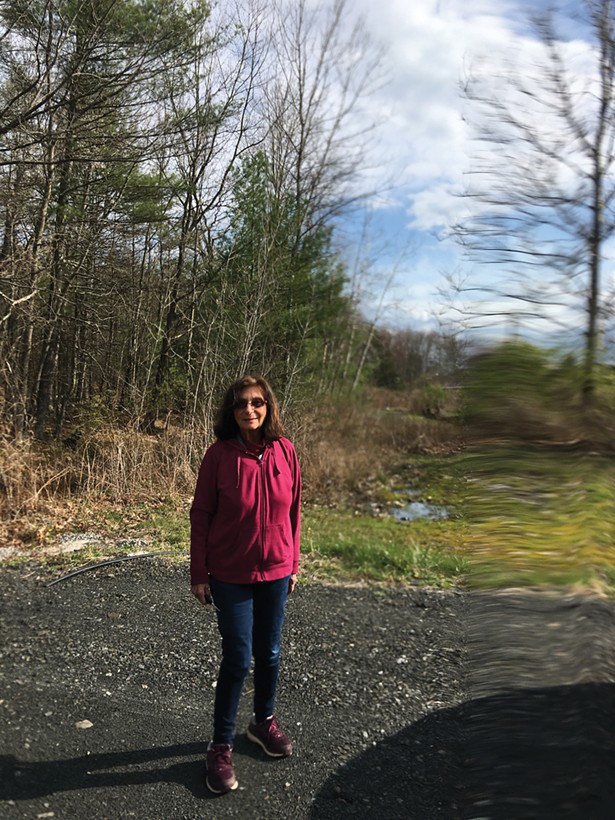
It wasn't until she received her second Pfizer vaccine this past March that something shifted. "I think I have more strength now," Lunn says. "I still get fatigued but I can go to the store, and I can drive for an hour, which is amazing." She's seen a difference, too, in doing breathwork exercises taught to her by qi gong teacher Corinne Mol, and in dry-brushing her skin to increase circulation and prevent numbness and tingling. She also went on Wellbutrin, which doctors like Wright say can help people turn a corner. There's no shame in needing that kind of boost. "It's not so much that patients are depressed," he explains, "but the antidepressants give you this feeling of overall wellbeing and take away some of the stressors and anxiety of the disease itself, and actually help you focus on getting better."
Often overlooked by Western medicine, breathwork is being taken seriously at major institutions like Mount Sinai, which has made it a cornerstone of their post-COVID recovery program. New patients are referred to the Stasis website, which has free video demos that anyone can try. "If people participate in our post-COVID rehab, which is our physical therapy program, they are recommended to have two weeks of 'prehab,' which is the breathwork," says Joan Bosco, MD, an internal medicine specialist at Mount Sinai. The thinking is that—by correcting dysfunctional breathing patterns connected to fatigue, shortness of breath, brain fog, and insomnia—breathwork can help get patients to a place where healing can begin.
Baby Steps Back to Health
After that, the aim is often to increase physical activity with a baby-step approach. "Even if it starts out with two minutes a day," says Kemp, "it's about setting small, realistic goals." A gradual method worked for Linda Weaver, 68, a voiceover agent in Cold Spring, who went through the wringer for months after she came down with COVID-19 in March 2020. "I lost probably 14 pounds in a couple of weeks," she recalls, "and the fatigue was extraordinary. What scared me is the length of time that it hung on. I started to think it was going to be a permanent condition." Fortunately, she's made big strides, and she credits that to her healthy, vegan pre-COVID lifestyle and her gradual reintroduction of tai chi, breathwork, and yoga. "Slowly but surely, now here we are a year later," says Weaver, who still deals with lingering GI symptoms but is once again able to take her two Brussels Griffons on long walks.
Pugliese is making progress, too. Many COVID patients experience foul odors or a burning smell that others can't detect—and she's working with an ear, nose, and throat doctor to restore her distorted sense of smell by using a neti pot and retraining her brain with essential oils like lemon, mint, and eucalyptus. And a Mobic prescription has done wonders for her joint pain and inflammation. "The first day I took it, I felt like a different person," she says. "I didn't feel healed, but I could walk on a treadmill, hold a pen, type on my computer. All those normal things that had become impossible."
The best way to avoid getting long COVID is to never contract the virus in the first place. Wear a mask. Wash your hands. Get vaccinated if it's appropriate for you. "The most important thing is not to lose hope," says Kemp. "We have science on our side. My passion is to make sure these individuals know that we see you, we hear you, we know you're hurting. And we're going to do everything we can to try to make it better."







